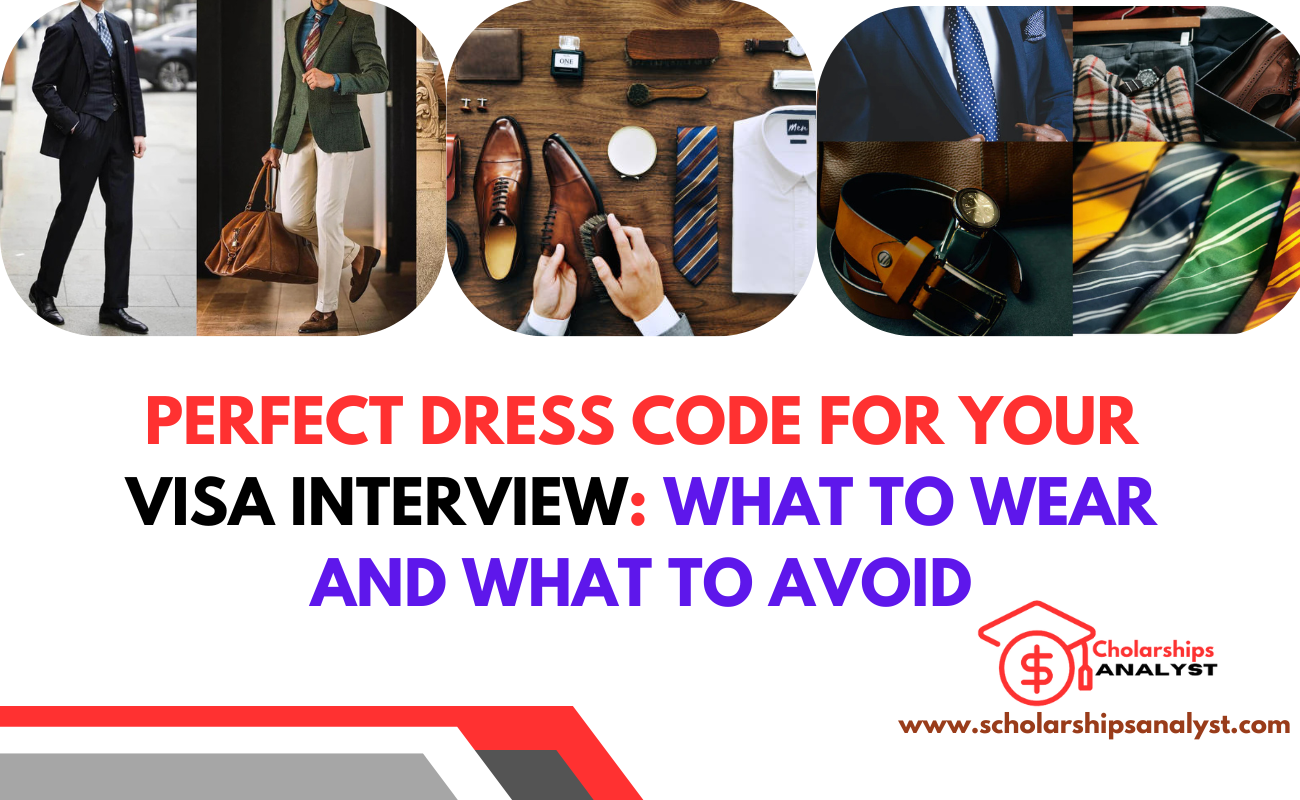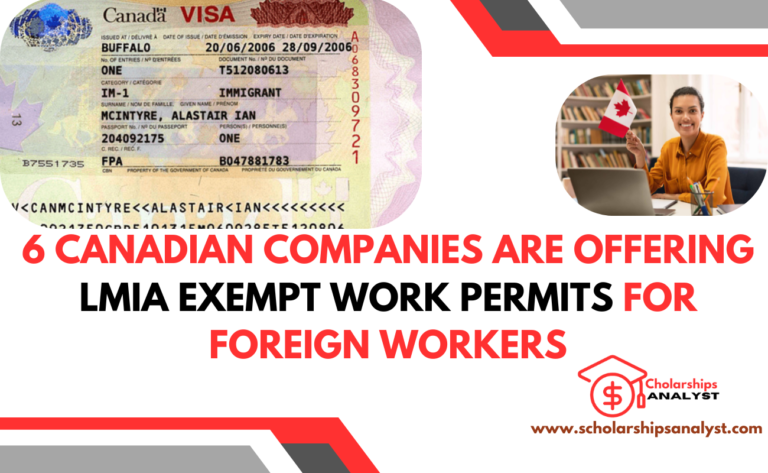A visa interview can be a life-changing moment, and how you present yourself plays a crucial role in the impression you leave. Your attire reflects your respect for the occasion and can influence how your application is perceived. Dressing appropriately shows professionalism, seriousness, and readiness. This guide covers all aspects of dressing for your visa interview, from outfit choices to accessories, color coordination, shoes, and what to avoid on this significant day.
Table of Contents
Importance of Dressing Well for a Visa Interview
Your appearance is often the first thing that an interviewer notices. While visa interviews typically focus on your eligibility, attire can subconsciously influence how you’re perceived. Dressing well not only makes you look polished but also boosts your confidence. Presenting yourself professionally demonstrates respect and leaves a positive impression, indicating that you take the process seriously. From the right suit to well-chosen accessories, each element of your appearance contributes to a holistic image.
Choosing the Right Dress Code
Formal Attire is Essential
For both men and women, formal attire is the most suitable choice for a visa interview. Whether applying for a student, work, or tourist visa, formal wear reflects maturity and professionalism. The dress code you choose should adhere to a formal or business casual standard. Avoid casual attire such as jeans, T-shirts, or flashy clothing. Select clothes that fit well, are clean, and wrinkle-free.
Recommended Styles for Men
A formal suit is the best option for men attending a visa interview. Choose suits in conservative colors such as navy blue, dark gray, or black. Pair the suit with a crisp, long-sleeved dress shirt in white or light blue, which exudes a professional look. The suit should fit properly without being too tight or too loose, so consider having it tailored if needed. Avoid loud patterns or bright colors, and stick to subtle, classic styles that convey seriousness.
Recommended Styles for Women
Women have a few formal options that include a well-fitted pantsuit, a skirt suit, or a conservative dress. If you choose a suit, go for one in classic colors like black, gray, or navy. Pair it with a blouse in neutral or pastel shades such as white, light pink, or cream. Dresses should be knee-length and not overly tight or revealing. Avoid bright, flashy colors and patterns; stick to muted, solid colors that complement the professional tone of the occasion.
Importance of Color Choices
Color Psychology and First Impressions
The colors you choose for your outfit can affect how others perceive you, even subconsciously. Neutral colors such as navy, gray, black, and beige are universally associated with professionalism and sophistication. Bright or bold colors can be distracting and give the impression of informality, so it’s best to reserve them for less formal occasions.
Ideal Colors for Men’s Outfits
For men, dark colors such as navy, charcoal, and black are preferred for suits as they convey reliability and authority. A white dress shirt is ideal, as it provides a clean, sharp contrast to darker suits, emphasizing a polished look. If white feels too stark, light blue is an excellent alternative that remains professional. Ties can introduce a touch of color, with maroon, navy, or dark green being suitable choices that add elegance without being overpowering.
Ideal Colors for Women’s Outfits
Women should also lean toward neutral colors for their outfits. Darker colors like navy, black, and gray are ideal for suits, while blouses in lighter shades like white, cream, or light pink can create a balanced look. If wearing a dress, ensure it’s in a solid, muted color without flashy patterns. The key is to maintain a cohesive color palette that looks refined and professional, avoiding bright or distracting colors.
Choosing the Right Tie and Accessories
Appropriate Tie Colors for Men
A tie can add character to your outfit but should be chosen carefully. Opt for ties in solid colors or subtle patterns. Colors like navy, maroon, and dark green are timeless and work well with dark suits. Avoid overly bright or flashy ties, as they can draw unnecessary attention. If wearing a patterned tie, ensure the pattern is simple, such as small dots or stripes, as intricate designs may look too casual.
Minimalist Jewelry and Accessories
For both men and women, less is more when it comes to accessories. Jewelry should be minimal and understated. Men can wear cufflinks if they match the overall outfit and are not too flashy; silver or gold cufflinks add sophistication without being distracting. Women should avoid large or excessive jewelry; small stud earrings and a simple bracelet or watch are sufficient. Avoid flashy or overly bright accessories, as they can detract from the professionalism of your look.
Selecting the Right Shoes and Belts
Recommended Shoe Styles for Men
Men should wear formal leather dress shoes in black or dark brown, matching the belt to the shoes for a coordinated look. Choose shoes with a polished finish, as scuffed or worn-out shoes can undermine an otherwise polished outfit. Ensure they’re clean, polished, and well-maintained, as attention to detail in footwear signals respect for the occasion. Avoid casual footwear like loafers, sneakers, or open-toed shoes.
Recommended Shoe Styles for Women
For women, closed-toe pumps or low-heeled shoes are ideal. Choose colors that complement your outfit, such as black, brown, or beige, and keep the heel height moderate to maintain comfort and professionalism. Open-toed shoes, sandals, or anything too casual should be avoided. Ensure that shoes are clean and in good condition, as this reflects attention to detail.
Grooming and Personal Hygiene
Hair and Makeup
Men should have a well-groomed hairstyle, avoiding any bold cuts or colors that may distract. If you have facial hair, ensure it’s neatly trimmed and clean. Women should opt for simple hairstyles and minimal makeup. Neutral makeup tones work best, enhancing your features without drawing too much attention. Avoid bold lipstick colors or heavy eye makeup, as they can appear unprofessional.
Skincare and Fragrance
Good skincare reflects health and cleanliness. Ensure your face is clean and moisturized, but avoid using products that leave a shiny finish. Light, subtle fragrances are acceptable but avoid strong perfumes or colognes, as they may cause discomfort for others. A mild deodorant and light cologne or perfume are sufficient.
Essential Dos and Don’ts
Dos
- Do wear conservative colors and styles to convey professionalism and respect for the process
- Do choose well-fitted clothing that allows for comfort and confidence during the interview
- Do keep jewelry and accessories minimal to avoid looking overly casual or flashy
- Do polish your shoes and maintain personal hygiene as these details reflect personal discipline
- Do bring a professional folder or briefcase to carry documents, enhancing your organized appearance
Don’ts
- Don’t wear casual attire like jeans, T-shirts, or sneakers, as they can suggest a lack of seriousness
- Don’t choose bright colors or patterns that may appear overly bold or informal
- Don’t overdo fragrance as it may be distracting or bothersome in a closed space
- Don’t accessorize heavily as too many accessories can create a casual look that’s not suitable for an interview setting
- Don’t wear oversized or ill-fitted clothing as it can appear unkempt or overly casual
Common Mistakes to Avoid
Overly Casual or Flashy Outfits
One of the most common mistakes is dressing too casually or in flashy colors that detract from a professional image. Avoid jeans, loud prints, neon colors, or clothing with logos. Your goal is to present a serious and polished look, so sticking to simple, classic styles and colors is essential.
Ignoring Fit and Comfort
An outfit that fits poorly can be distracting for both you and the interviewer. Ensure that your clothes are tailored to fit well. Uncomfortable attire can also make you appear uneasy, so choose clothes that allow for natural movement.
Underestimating the Importance of Shoes
Shoes may seem minor but can significantly impact your appearance. Unpolished or worn-out shoes detract from a polished outfit. Investing in quality, well-maintained shoes shows that you pay attention to detail, a trait that’s valued in professional settings.
Final Thoughts
Your attire for a visa interview is a vital part of creating a positive first impression. Dressing appropriately shows respect for the process, professionalism, and seriousness about your goals. Choosing a conservative, well-coordinated outfit with polished accessories and shoes reflects readiness and reliability. By following these guidelines, you can approach your visa interview with confidence, ensuring that your appearance complements the credibility of your application.
FAQs: Dressing for Your Visa Interview
1. What should I wear to a visa interview?
It’s best to wear formal or business attire, such as a suit for men and a conservative dress, pantsuit, or skirt suit for women. Choose neutral colors like navy, black, or gray to project professionalism and seriousness.
2. Can I wear casual clothes, like jeans or a T-shirt?
No, it’s recommended to avoid casual clothing like jeans, T-shirts, or sneakers. Dressing too casually may give an impression of lack of preparation or seriousness. Opt for formal or business casual attire instead.
3. Is it okay to wear a colorful tie or blouse?
Subtle colors are preferable. Men should stick to ties in darker shades or muted patterns, such as navy or maroon, to maintain a professional look. Women should choose blouses in light or neutral tones, like white or beige, and avoid bright or bold colors that can be distracting.
4. Should I wear accessories, and if so, how much?
Keep accessories minimal. For men, a simple watch and cufflinks are suitable if understated. Women should opt for small stud earrings, a watch, or a simple bracelet. Avoid anything too flashy, like large jewelry or brightly colored accessories.
5. What type of shoes should I wear?
Men should wear formal leather shoes in black or dark brown, matching the belt. Women should opt for closed-toe shoes like low heels or flats in neutral colors such as black or beige. Avoid open-toe shoes or casual styles.
6. Is a particular color better for the interview outfit?
Neutral and subdued colors like navy, black, gray, and beige are best for creating a professional impression. These colors convey reliability and professionalism, which is ideal for a visa interview setting.
7. How should I style my hair for the interview?
Choose a simple and neat hairstyle. Men should have a clean haircut, with facial hair neatly trimmed if present. Women should keep their hair styled away from the face, and avoid bold hair colors or styles that could be distracting.
8. Can I wear perfume or cologne?
A light fragrance is acceptable, but avoid strong perfumes or colognes. Choose a mild scent, as strong fragrances can be overwhelming in a small interview room.
9. Is makeup allowed, and if so, what is appropriate?
Yes, but keep it subtle. For women, neutral makeup is best, using light foundation, minimal eye makeup, and a soft lip color. Avoid bold lipstick or heavy eye makeup.
10. What should I avoid wearing altogether?
Avoid casual attire like jeans, sneakers, T-shirts, and anything too bright or flashy. Also, avoid heavy jewelry, bold patterns, strong fragrances, and poorly fitting clothes. Aim for a look that is clean, professional, and respectful of the formal nature of a visa interview.
11. Should I bring anything specific with me to the interview?
Aside from necessary documents, consider a professional-looking folder or briefcase to keep your paperwork organized. Avoid bringing casual bags or items that may clutter the interview room.
12. Can I wear a culturally traditional outfit to my visa interview?
Yes, culturally appropriate or traditional attire is generally acceptable if it aligns with professional standards. Ensure it is neat, well-fitted, and respectful, avoiding bright or distracting colors if possible.




Leave a Comment